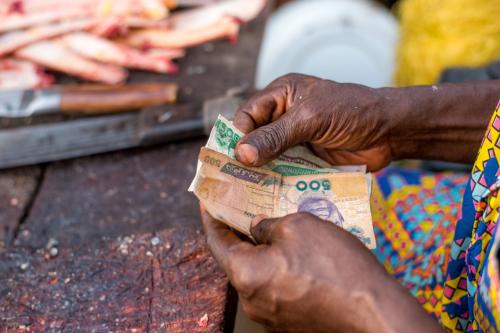The middle class would seem to hold the economic fate of the world in its hands, considering the frequency with which it appears in media debates and academic discussions. A large, thriving middle class has been associated with a combination of stable political systems and sustained rates of economic growth. In contrast, a society with a small, or hollowing out, middle class is linked to political tensions and economic fragility (see here, here, and here).
Historically, Europe has been the quintessential middle-class society, given its lower levels of inequality and comprehensive welfare state. This welfare state emerged during the 19th century, when the growing middle class supported an expansion of public services and social assistance programs aimed at protecting itself and, in turn, helping poorer people join its ranks.
Yet, after the global financial crisis in 2009, the European middle class seemed to show unprecedented levels of vulnerability. Almost a decade after the crisis, a broader question is in public debate: Is the European middle class in crisis? Are the transitioning economies in the eastern part of the region—which are all middle-income countries—in danger of falling short of achieving a middle class?
It depends on whether “crisis” means that the middle class is shrinking or that being middle class is not what it used to be.
In terms of size, the trends are not so concerning. In terms of vulnerability, however, the situation has been worsening. As the forthcoming Leveling the Playing Field report shows, the middle class is not hollowing out but has become more fragile.
There are many ways to measure the middle class. Our absolute threshold for the middle class is defined using a vulnerability approach. Using European Union Statistics on Income and Living Conditions panel data, a threshold level of income is estimated such that, above that level, the probability of falling into poverty is reasonably low. This implies that not being poor does not make you middle class. Between the middle class and the poor, there is a third group that is not poor but still faces a high probability of falling back into poverty in the presence of a shock.
Using this absolute, now commonly used, definition of middle class, what we see is that little has happened to the size of middle class in Europe (Figure 1). In transition economies, the middle class has actually been expanding for most of the period, though this expansion has lost momentum. Meanwhile, not much has changed in Western Europe. These results are the same if we use a relative measure to define the middle class (e.g., 75-125 percent of median income).
Figure 1. The size of the middle class has remained stable
The middle class in Europe has become more fragile
The evolution of the size of the middle class is not the most relevant story in the past decades. Even though trends in the size of the middle class have been relatively static (especially over the past 10 years), trends in vulnerability have been markedly dynamic. While the share of the population in Europe that could be classified as middle class has reached a plateau, the vulnerability of its members to falling back into poverty has increased.
Using a poverty line of $21.70 per day (in purchasing power parity term), which has been suggested for high-income countries, the income threshold above which one belongs to the middle class—meaning they have a sufficiently low probability of falling into poverty—was about $34 per day in the EU from 2005 to 2008. In less than a decade, this threshold has increased 20 percent, to $40 per day (Figure 2). This upward shift in vulnerability could be labeled an “insurance premium” necessary to mitigate the risk of falling into poverty. This premium can be shockingly high—at 100 percent or more. In Bulgaria, for example, it grew from $14 to $32 per day and in Latvia from $22 to $44.
Figure 2. The middle class has become more vulnerable in the EU
Source: Authors’ calculations on EU-SILC UDB-L data
While this evidence looks only at the wealthier half of Europe and Central Asia, it is suggestive of a regional trend: While the size of the middle class has remained stable during the recent past, vulnerability of falling out of this group and into poverty has increased.
This increase in vulnerability, linked also to a changing profile of those in the middle class, is in line with the perception that the middle class is losing out—resulting in heated policy debates and proposals to overhaul taxation and social protection systems. It also has implications for the political platforms the middle class is willing to support. But these are topics for another blog post.
The Brookings Institution is committed to quality, independence, and impact.
We are supported by a diverse array of funders. In line with our values and policies, each Brookings publication represents the sole views of its author(s).









Commentary
Is there a middle-class crisis in Europe?
March 22, 2018